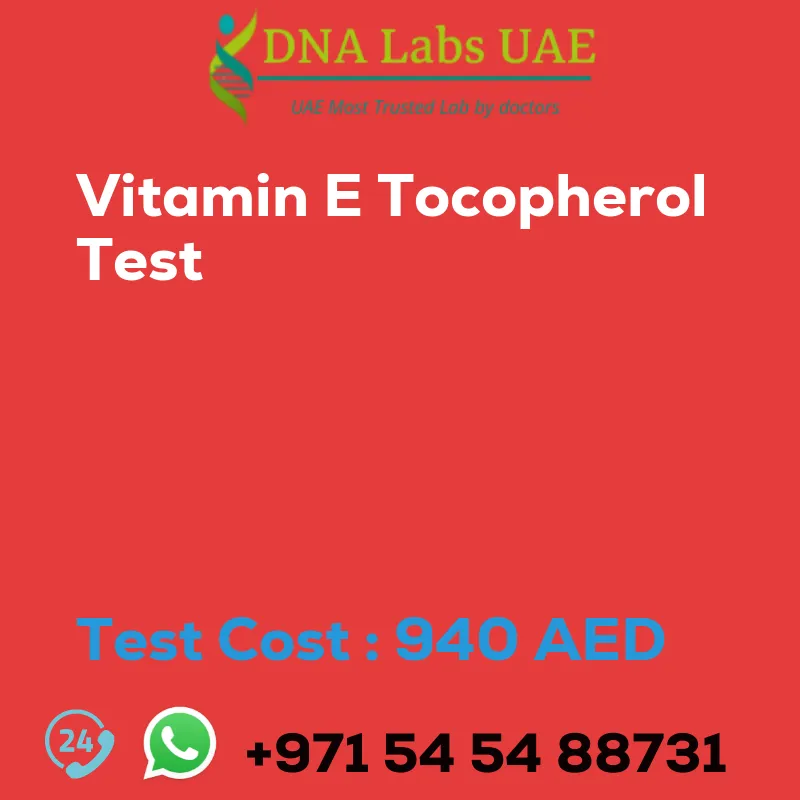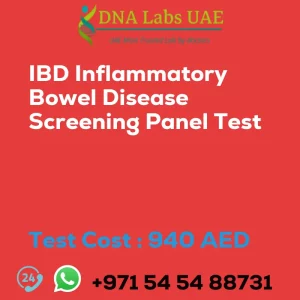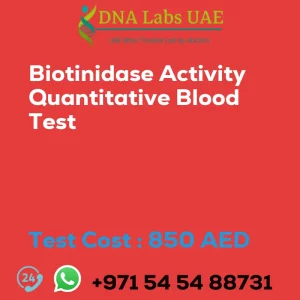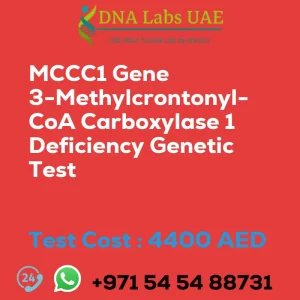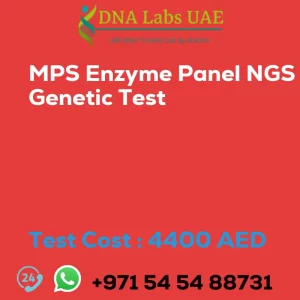VITAMIN E TOCOPHEROL Test
Test Name: VITAMIN E TOCOPHEROL Test
Components: Vitamin E Tocopherol
Price: 940.0 AED
Sample Condition: 3 mL (1.5 mL min.) serum from 1 Red Top (No Additive) tube. Do not use SST gel barrier tubes. Separate serum from cells within 1 hour of collection. Ship refrigerated or frozen. Wrap in aluminium foil to protect from light. Overnight fasting is mandatory.
Report Delivery: Sample Fri by 9am; Report Tue
Method: High Performance Liquid Chromatography
Test Type: Nutritional disorders
Doctor: Physician
Test Department: HPLC
Pre Test Information: Overnight fasting is mandatory. Wrap sample in aluminium foil to protect from light.
Test Details
The Vitamin E Tocopherol test is a laboratory test used to measure the levels of tocopherol, a type of vitamin E, in the blood. Vitamin E is a fat-soluble antioxidant that plays a crucial role in protecting cells from damage caused by free radicals. It is also important for immune function and blood clotting.
The test is typically ordered to evaluate vitamin E deficiency or excess in individuals with symptoms such as muscle weakness, vision problems, nerve damage, or anemia. It may also be ordered to monitor the effectiveness of vitamin E supplementation or to assess the risk of certain diseases, such as cardiovascular disease or cancer.
During the test, a blood sample is taken from a vein in the arm and sent to a laboratory for analysis. The test measures the levels of alpha-tocopherol, the most biologically active form of vitamin E, in the blood. Results are usually reported in either milligrams per liter (mg/L) or micromoles per liter (mol/L).
Normal levels of vitamin E tocopherol can vary depending on the laboratory and the individual’s age, sex, and health status. Generally, a normal range is considered to be between 5-20 mg/L or 11.6-46.2 mol/L. Abnormal results may indicate a deficiency or excess of vitamin E.
Low levels may be seen in individuals with malabsorption disorders, liver disease, cystic fibrosis, or a diet low in vitamin E. High levels may be seen in individuals taking excessive vitamin E supplements or in rare cases of certain genetic disorders.
It is important to note that the interpretation of vitamin E tocopherol test results should be done by a healthcare provider who can consider the individual’s medical history, symptoms, and other relevant factors.
| Test Name | VITAMIN E TOCOPHEROL Test |
|---|---|
| Components | |
| Price | 940.0 AED |
| Sample Condition | 3 mL (1.5 mL min.) serum from 1 Red Top(NoAdditive)tube. Do not use SST gel barrier tubes. Separateserum fromcellswithin1hourofcollection. Shiprefrigeratedorfrozen. Wrapinaluminium foil to protect fromlight. Overnight fasting is mandatory. |
| Report Delivery | SampleFriby 9am;ReportTue |
| Method | High Performance Liquid Chromatography |
| Test type | Nutritional disorders |
| Doctor | Physician |
| Test Department: | HPLC |
| Pre Test Information | Overnight fasting is mandatory. Wrap sample in aluminium foil to protect from light. |
| Test Details |
The Vitamin E Tocopherol test is a laboratory test used to measure the levels of tocopherol, a type of vitamin E, in the blood. Vitamin E is a fat-soluble antioxidant that plays a crucial role in protecting cells from damage caused by free radicals. It is also important for immune function and blood clotting. The test is typically ordered to evaluate vitamin E deficiency or excess in individuals with symptoms such as muscle weakness, vision problems, nerve damage, or anemia. It may also be ordered to monitor the effectiveness of vitamin E supplementation or to assess the risk of certain diseases, such as cardiovascular disease or cancer. During the test, a blood sample is taken from a vein in the arm and sent to a laboratory for analysis. The test measures the levels of alpha-tocopherol, the most biologically active form of vitamin E, in the blood. Results are usually reported in either milligrams per liter (mg/L) or micromoles per liter (mol/L). Normal levels of vitamin E tocopherol can vary depending on the laboratory and the individual’s age, sex, and health status. Generally, a normal range is considered to be between 5-20 mg/L or 11.6-46.2 mol/L. Abnormal results may indicate a deficiency or excess of vitamin E. Low levels may be seen in individuals with malabsorption disorders, liver disease, cystic fibrosis, or a diet low in vitamin E. High levels may be seen in individuals taking excessive vitamin E supplements or in rare cases of certain genetic disorders. It is important to note that the interpretation of vitamin E tocopherol test results should be done by a healthcare provider who can consider the individual’s medical history, symptoms, and other relevant factors. |

